1 professionals
Atopic dermatitis: Clinic, diagnosis and treatment
Atopic dermatitis: Clinic, diagnosis and treatment
Medical editor: Dr. Marina Alexandre, Dermatologist, Avicenne Hospital, France.
Related topics
Genetic factors responsible for the alteration of the skin barrier and immune hypersensitivity
Fig 1,2: Infant eczema
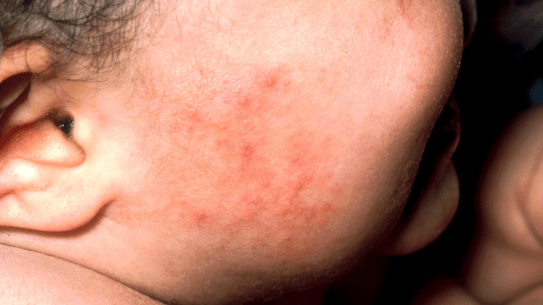
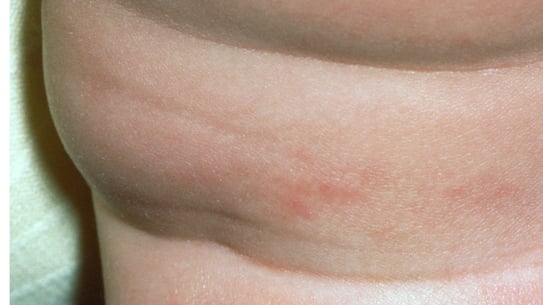
Fig 1,2: Atopic Dermatitis
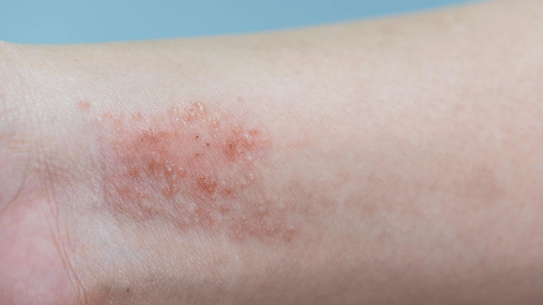
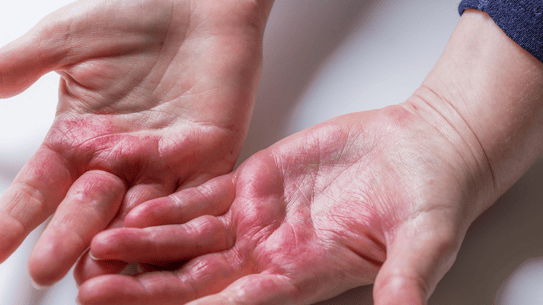
The diagnosis of AD is clinical and anamnestic. A family history is found in 70% of cases of AD.
The diagnostic criteria defined by the United-Kingdom working party14 can be adopted:
Puriginous dermatosis or parents reporting that the child is scratching or rubbing.
The differential diagnosis of AD depends on the patient's age, location, and kind of lesions s/he presents with6:

Reference: Raimondo, A. & Lembo, S. Atopic Dermatitis: Epidemiology and Clinical Phenotypes. Dermatol. Pract. Concept. e2021146 (2021).
Fig 1: Cutaneous T-cell lymphoma; Fig 2: Pityriasis rosea
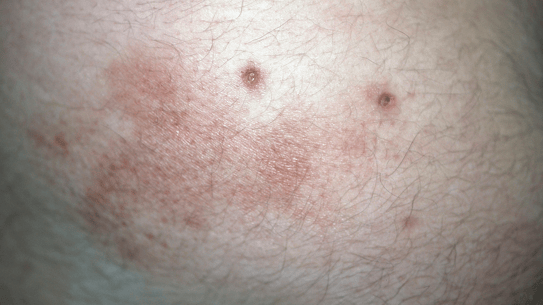
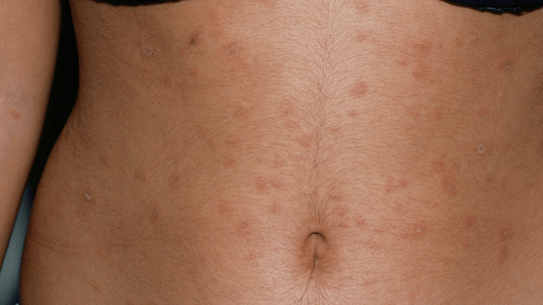

Reference: Raimondo, A. & Lembo, S. Atopic Dermatitis: Epidemiology and Clinical Phenotypes. Dermatol. Pract. Concept. e2021146 (2021).
Fig: Infectious cheilitis
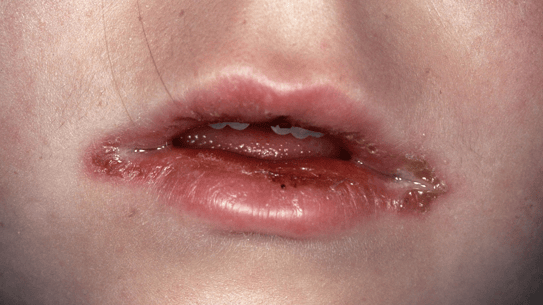

Reference: Raimondo, A. & Lembo, S. Atopic Dermatitis: Epidemiology and Clinical Phenotypes. Dermatol. Pract. Concept. e2021146 (2021).
The prognosis for the course and severity of AD are adapted to the age of the patient. While they vary from person to person, there are some general trends:
The degree of severity of AD can be measured using one of the following scales. In practice, extensive lesions and a significant impact on the quality of life (especially sleep and pruritus) are sufficient to identify severe AD, requiring a referral to a specialist.
The treatment for atopic dermatitis is symptomatic.The management and regular monitoring of patients allows:
Likewise, the respect of certain hygienic and dietary rules is an integral part of the basic treatment and will limit flare-ups:
It is fundamental to explain to the parents (or to the patient) the importance of the daily application of emollients on the whole body by explaining to them that atopic dermatitis is a disease evolving by flare-ups, favoured by the alteration of the cutaneous barrier. It is therefore necessary to preserve and restore it in the long run.
How to relieve itching?
Should a specific milk be prescribed for an infant with AD?
Is there a relationship between iron deficiency in infants and atopic dermatitis? How relevant is iron supplementation to atopic dermatitis?
Are there barrier creams to allow children to swim in sea water in case of a flare-up?
Can we have animals in the house if a member of the household has AD?
Create easily your professional account
I create my accountGet access to exclusive dermatological services to increase your professionnal knowledge: +500 pathology visuals, clinical cases, expert videos
Benefit from valuable features: audio listening, materials to be shared with your patients
Stay informed about the upcoming events and webinars, latest scientific publications and product innovations
